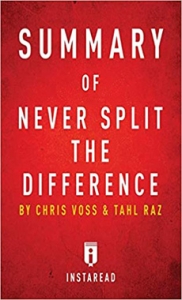
TV reality show personalities Drew and Jonathan Scott have long been favorites of mine, so I was delighted to find their new lifestyle magazine, “Reveal” at a neighborhood newsstand.
At Say It For You, our content writers are always seeking to vary the ways we present information on a single topic in many different ways. Not only are we on the lookout for different “templates” in terms of platform graphics, but different formats for presenting information about any business or professional practice.
Well, I found, the Property Brothers have that technique down pat. In this single magazine issue, there are five different articles, all relating to just one aspect of home decor – tile!
1. the Tile Files
To help readers “know their options”, Drew and Jonathan present an overview of seven different tile types, including ceramic, porcelain, terra-cotta, class, cement, Natural stone, and peel-and-stick, listing the pros and cons of each.
The point of using lists of options, I explain to blog content writers, is to provide valuable information, to readers, suggesting different ways in which the business owner’s products – or the practitioner’s services – might be of particular use to them, perhaps in a way they hadn’t considered.
2. the Shape of Things
Here Drew and Jonathan delve into their subject in greater detail, first listing the different shapes in which tiles or sold. This “listicle” doubles as an advice column, since certain shapes, the brothers explain, work best for certain applications. “Mermaid” or scallop-shaped tiles, we learn, are sold interlocked for easier installation on kitchen backsplashes or behind bathroom vanities. “Square Zelligs” are glazed, often non-uniformly shaped, ceramic tiles best used for countertops and shower walls “for people who like a little character and don’t mind a snag here or there.”
Offering advice that’s out of the ordinary is actually great advice for business blog content writers. Drew and Jonathan are offering advice readers can use right now. More important, the authors are explaining the reasons behind each piece of advice.
3. the Trends
In this article, the Property Brothers collate advice from four different prominent designers. Barbie Palomina, for example likes using tiles on ceilings as well as on walls and floors. Gabrielle Aker likes mixing three complementary colors of tile to create a sunrise effect.
Kathryn Berschback installs tiles with prints and patterns in a butler’s pantry, while Zzoe Gowan “mixes and matches: patterned and solid tiles.
Since we are hired by clients to tell their story online to their target audiences, we need to do intensive research, as well as taking guidance from the client’s experience and expertise. Interviewing experts allows us dig deeper into the topic, offering added value to readers by bringing in expert insights.
4. All About Grout
This piece falls into the “how-to” category, with practical tips and cautionary advice for DIY readers. “While figuring out the right mix of cement, water, and sand may seem like more of a practical decision than a pretty one,” the authors caution readers that the grout they select is going to be permanently visible between the tiles. That means that both the color of the grout and the amount of spacing between tiles will have a big impact on the finished appearance.
As effective blog content writers, we can demonstrate to our readers how to dodge dangers and avoid costly and embarrassing mistakes. The Property Brothers’ articles are the kind home remodelers might cut out and keep. In the same vein, effective blog content should offer cut-out-and-keep, useful and actionable advice.
5. Install Intel
Before you invest in tile, the Property Brothers advise, find an installer with credibility. The Tile Council of North America (TCNA) certifies installers and keeps them up to date on the most current standards and practices around the installation of tile.
The success of your blog marketing efforts, we explain to Say It For You clients, will be very closely aligned with your positioning yourself as a go-to source of trustworthy information. Using factual proof involves offering statistics about the problem your product or service helps solve; credentializing proof cites your years of experience, and degrees earned.
At Say It For You, our content writers are on the lookout for different formats for presenting information about any business or professional practice. Those five different Reveal Magazine articles, all about tile, yet all different, serve as a great example of imaginative ways to deliver information to blog content audiences.











Follow us online!